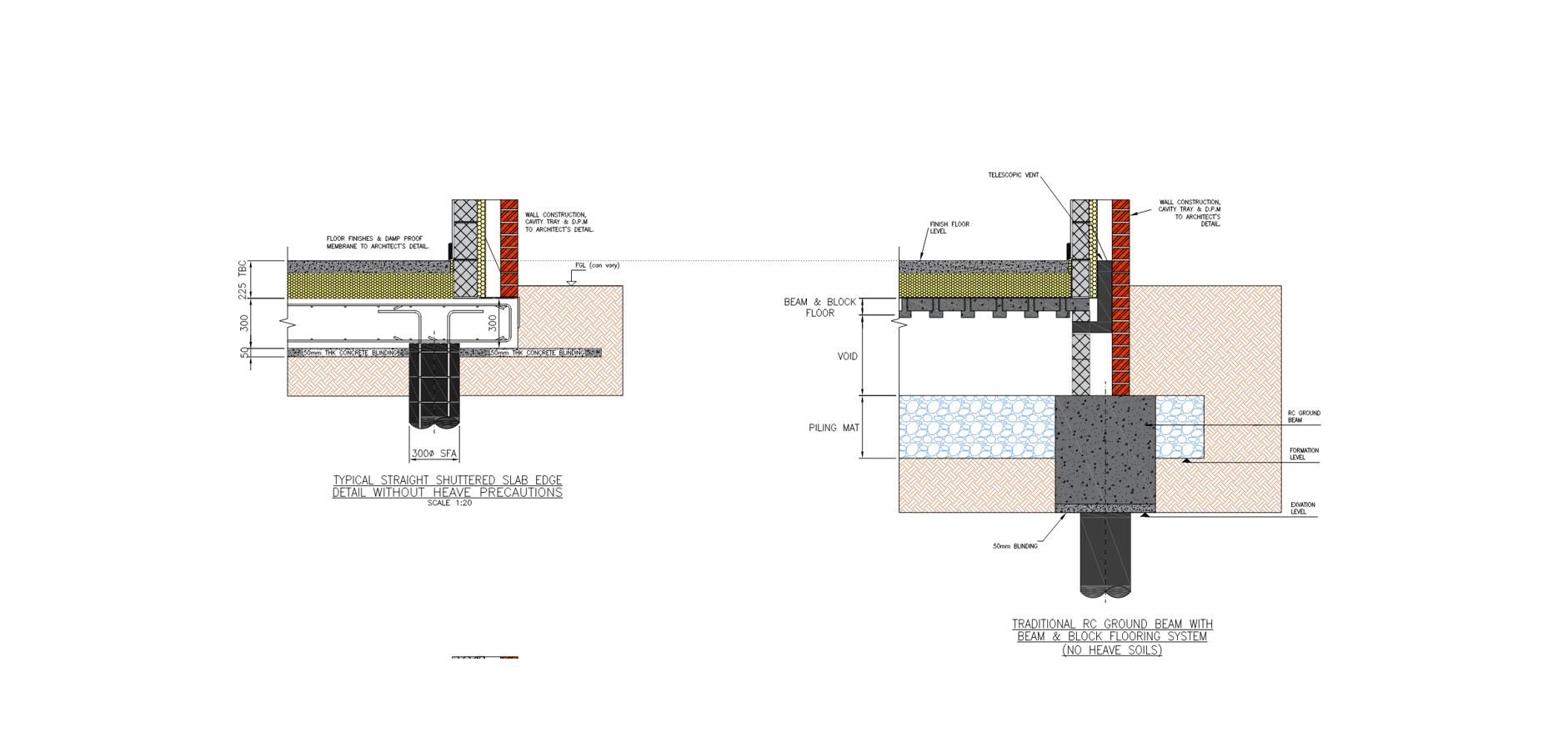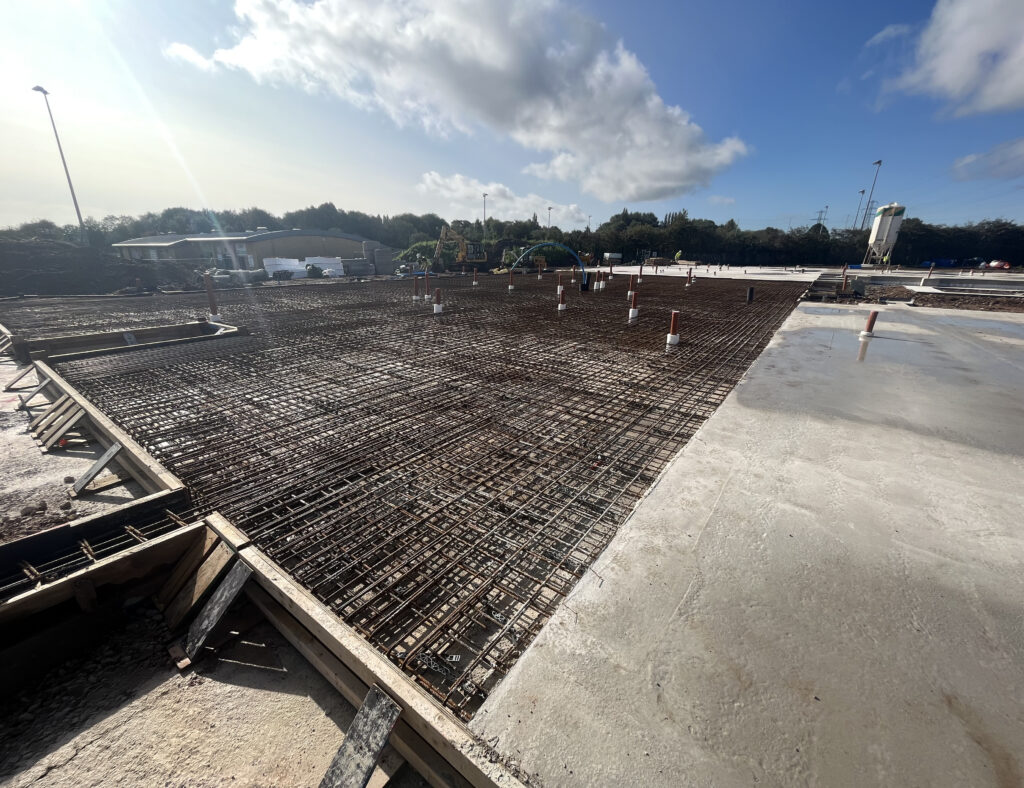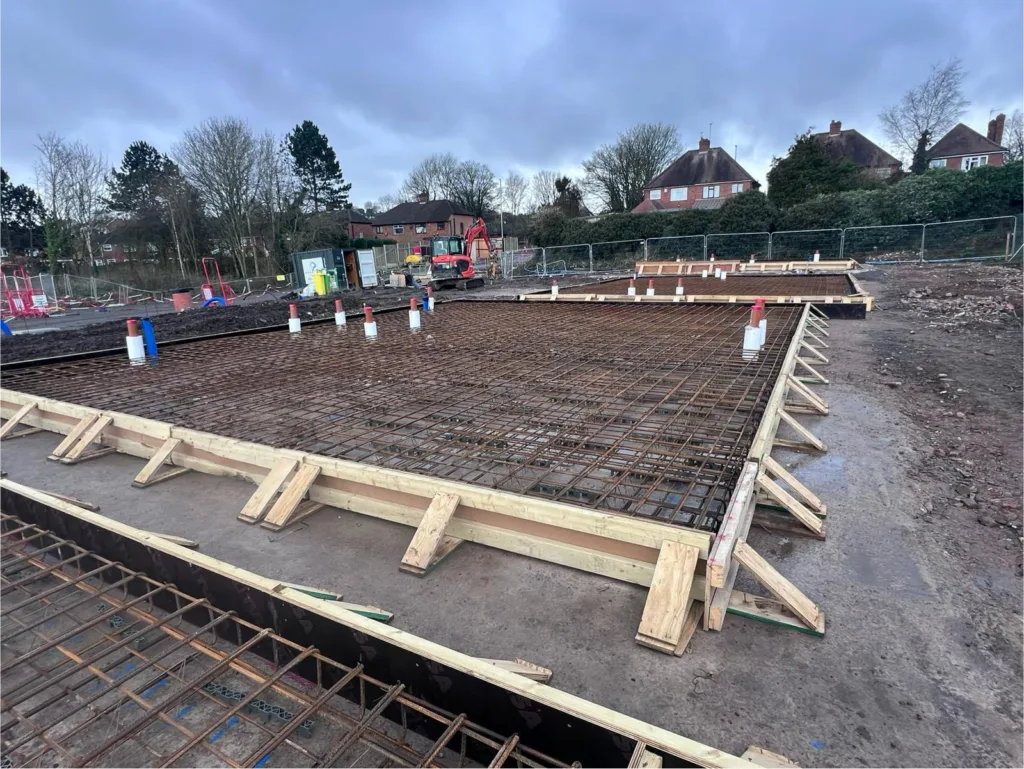When comparing piled raft foundations with pile ground beam and precast floor solutions, several advantages emerge, particularly in terms of fewer components, reduced management complexity, and fewer variations. Here’s a breakdown of these benefits:
1. Fewer Components
– Integrated System: Combines both the raft and piles into a single system, reducing the number of individual components needed, and reducing the cost of materials.
– Simplified Design: Fewer components mean less detailed design work is required, which can streamline the construction process and reduce costs.
Pile Ground Beam and Precast Floor
– Separate Elements: Requires separate ground beams, piles, and floor components, increasing the number of individual parts and cost for materials.
– Complex Connections: More connections and interfaces between different components, each needing precise alignment and coordination requires more time on site.
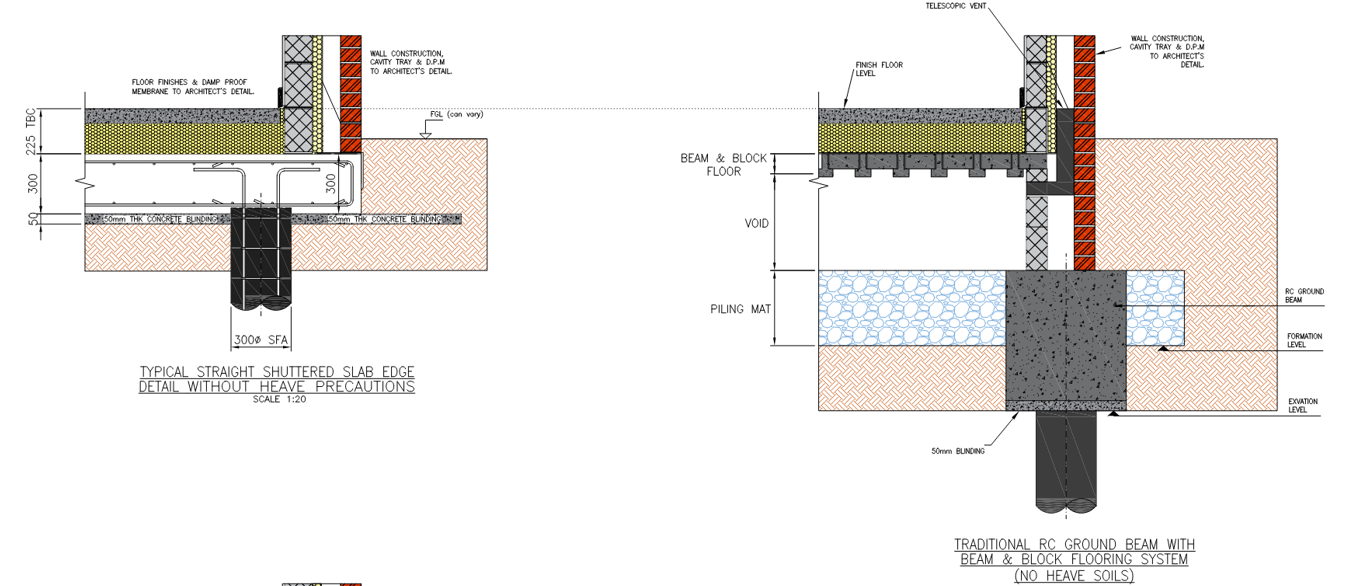
2. Reduced Management Complexity
Piled Raft Foundation
– Single Operation: Fewer components and an integrated approach mean that project management is simplified, with fewer trades and coordination efforts. We offer a one-stop foundation solution.
– Streamlined Scheduling: With fewer separate tasks, the construction schedule is easier to manage and less prone to delays, meaning the foundations are finished and ready to go for the next stage on time and to budget.
Pile Ground Beam and Precast Floor
– Multiple Operations: Managing the installation of piles, ground beams, and precast floors requires coordinating multiple operations and trades. More people to schedule and manage is often prone to delays.
– Increased Supervision: More components and stages necessitate increased supervision and quality control. High costs associated on-site.
3. Fewer Variations
Piled Raft Foundation
– Standardised Design: The integrated nature of the piled raft can be standardised, reducing design variations and leading to a more predictable construction process often saving money from the original planned works.
– Less Customisation: With fewer components, there is less need for customisation, which simplifies procurement and reduces the likelihood of errors.
Pile Ground Beam and Precast Floor
– Custom Components: Each project/plot might need specific designs for ground beams and precast floors, leading to more variations and associated costs.
– Complex Adjustments: Adjustments and modifications are more common due to the separate nature of the components, increasing the potential for variations and rework. This can add time to the initial stages, delaying the development.
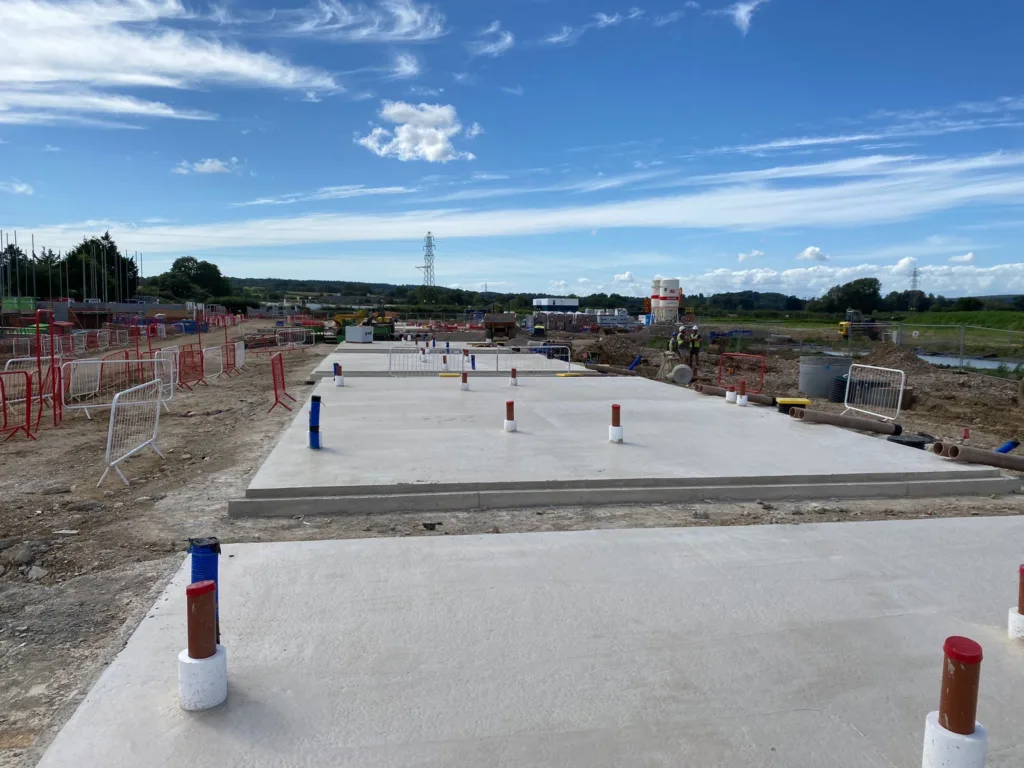
Summary of Benefits
– Less Components: Piled raft foundations integrate the functions of piles and rafts into a single system, reducing the number of components.
– Less Management: The simplified system of piled rafts leads to reduced project management complexity, with fewer trades and operations to coordinate.
– Less Variations: The standardised and integrated approach of piled rafts minimises design variations, reducing customisation needs and potential errors.
Overall, the piled raft foundation offers a more streamlined, efficient, and manageable solution compared to the pile ground beam and precast floor systems, making it advantageous in projects where simplicity and reliability are paramount.

